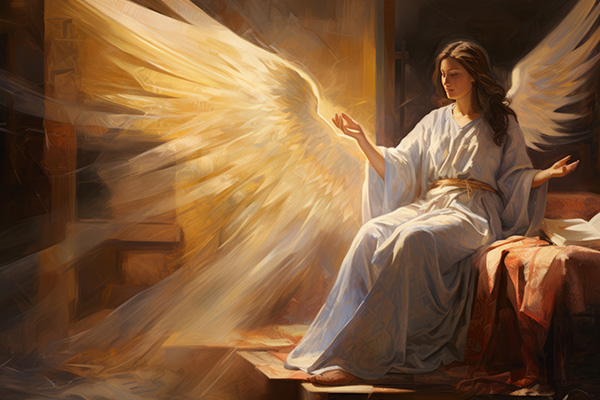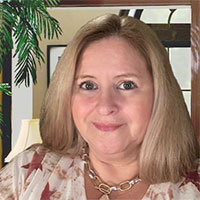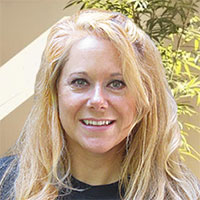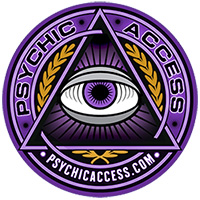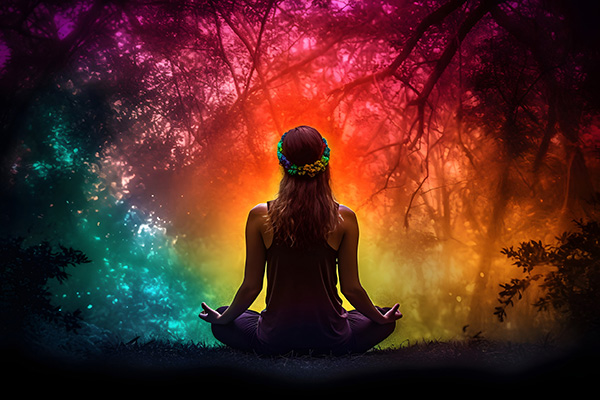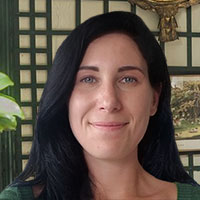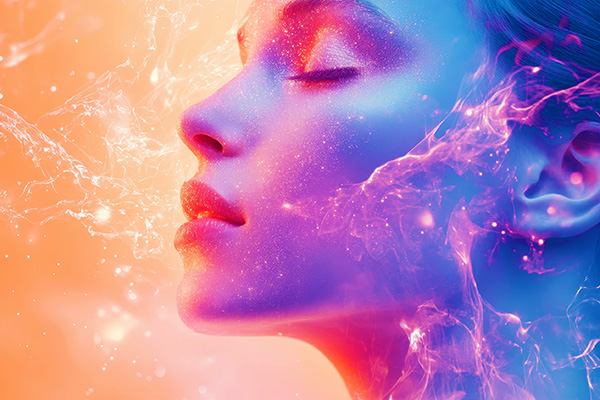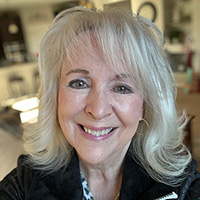 Some years back, my closest friend confided that she had been experiencing what she referred to as “floating experiences.” She explained that as she was settling down for the night, she would suddenly feel as if her spirit was ascending above her physical form. This left her quite unsettled at the time, as she wasn’t attempting to trigger it and felt no control over the phenomenon.
Some years back, my closest friend confided that she had been experiencing what she referred to as “floating experiences.” She explained that as she was settling down for the night, she would suddenly feel as if her spirit was ascending above her physical form. This left her quite unsettled at the time, as she wasn’t attempting to trigger it and felt no control over the phenomenon.
During that period, I was deeply engrossed in psychic development. I devoted my evenings to reading, engaging in conversations, and delving into a range of spiritual practices.
Upon hearing her describe what she was undergoing, I immediately recognized that she was talking about astral travel. This concept was familiar to me, as I had been practicing it for a considerable duration.
Astral travel refers to the experience where your mental awareness, or “conscious self,” disconnects from your physical form, allowing you to explore various planes of existence. It’s the experience of your inner essence, your soul or spirit, transcending the boundaries of time and space along with the limitations of the physical universe.
Once you “depart” your physical form, earthly laws cease to apply. Gravity and distance, as we understand them, become irrelevant. Some travelers report reaching distant locales on Earth, while others venture into entirely different realms or even other planets. For many, this experience affirms that we are more than just physical entities; we are souls with immense capabilities.
This practice enjoys widespread popularity in psychic development communities as it provides a direct means to experience consciousness beyond the physical body. It serves as a portal to an altered state of awareness that enhances the connection to subtle energies and non-physical perception.
Movements of consciousness are indeed self-projections from one location to another, from one dimension to another, and while the physical body may remain still, it is nonetheless profoundly influenced by these journeys ~ John Kreiter
In contrast to more complex and demanding psychic techniques, achieving astral awareness is a relatively straightforward skill that can be nurtured through meditation, visualization, and various other methods. The notion of leaving one’s body to explore different realms has rich cultural significance, dating back from ancient Egyptian soul travels to yogic siddhis in Hinduism.
Astral work can markedly accelerate one’s psychic growth when compared to practices conducted in ordinary waking states. During astral travel, we tap into a non-physical realm referred to as the astral plane. This metaphysical dimensions facilitate deep spiritual communication and discovery.
Astral Travel Vs. Astral Projection
You may be curious why some individuals, like my friend, can effortlessly disengage from their bodies, while others may never encounter such phenomena or must actively seek them out.
The answer may lie in emotional intensity. At that time, my friend faced a challenging divorce and managed a high-pressure job. It seems her soul discovered a means to cope by transiently detaching. This kind of unintentional projection may be the psyche’s response to needing a mental break.
Research indicates that between 8 and 20 percent of individuals experience a spontaneous out-of-body experience during their lifetime. However, many individuals intentionally pursue the astral realm as part of a spiritual practice.
Astral travel includes both conscious and unconscious activities such as vivid dreams, meditative explorations, and spontaneous out-of-body experiences (OBEs). The most effective form of astral travel is astral projection, a specific technique falling under the broader sphere of astral travel. If astral travel represents the journey, then astral projection acts as one of the modes of transport.
While my friend’s encounters were spontaneous and unintentional, astral projection is a purposeful practice where one is fully aware of the disconnection and intentionally navigates through other realms or dimensions.
I am captivated by the experience and the potential that there are realms beyond the one we are aware of. The explorer in me finds it truly fascinating ~ Dorothee Marossero
Astral Projection For Psychic Development
Astral projection is particularly beneficial for anyone eager to enhance their psychic abilities, and it’s easy to see why. Fundamentally, astral projection grants a profound sense of freedom between mind and body. It enables you to consciously transcend the confines of your physical form and journey into realms beyond the tangible world.
Astral “ventures” are deeply personal and transformative. Practitioners often emerge from an astral journey with newfound clarity regarding their life’s purpose, spirit guides, and undiscovered aspects of their subconscious. It serves as a channel for receiving wisdom directly from your soul and the cosmos, rather than relying solely on literature or instructors.
Unlike various psychic methods that necessitate tools like tarot cards or crystals, astral projection fundamentally depends on intention and awareness. This accessibility means that anyone with patience and an open mindset can attempt it. Whether you seek healing, insight, or connection, or are simply curious, the astral realm offers a uniquely expansive experience.
Moreover, numerous individuals report that engaging in astral projection heightens their intuition, alleviates their fear of death, and fortifies their bond with the divine. This intriguing practice fosters personal growth, tranquility, and a sense of universal belonging. In a world often filled with noise and confined to the five senses, astral projection serves as a reminder of our limitless essence. For those on a spiritual path, this reminder is both potent and empowering.
Personally, I discovered the following reasons to be the most persuasive:
States Of Consciousness: Much of our lives are spent in ordinary awareness. Yet, beyond this typical state, a whole array of consciousness exists. The astral realm acts as a portal to these elevated states. Accessing it can transform your comprehension of thoughts, dreams, and even your waking reality.
Spiritual Self-Discovery: Astral projection is an incredibly powerful means of self-exploration. Picture lifting the curtain and witnessing the vast tapestry of existence beyond your daily life. Astral projection provides clarity not only on the universe but also on your own soul. You come to realize that you are more than a physical form; you are a spiritual entity interconnected with spirit and the divine.
Connecting With Spirit Beings: If you’ve ever wished to communicate more deeply with your ancestors, spirit guides, or angels, astral projection serves as a formidable medium to facilitate this. In the astral plane, you can more easily forge connections with benevolent spirit entities that support your journey, offering insight, comfort, and guidance.
Overcoming Fear: Death is a daunting topic for many, yet astral projection can shift your perspective on it. The experience of perceiving yourself outside of your physical body helps you understand that your essence does not cease to exist when your heart stops beating. This revelation transcends mere intellectual understanding; it’s something you grasp through direct experience. Such insight often brings deep solace.
Personal Healing: Many individuals utilize astral projection for both physical and emotional healing. Whether it’s about releasing trauma, finding peace after a loss, or obtaining understanding regarding a health challenge, people often experience tangible healing based on insights gleaned from the astral realm. While science may still regard this as fringe, many affirm its positive outcomes.
You are on your quest. That is thrilling. If you’re balanced, your vessel will float on a low tide as easily as it does on a high tide ~ Stuart Wilde
How To Astral Travel (For Beginners)
If you’re interested in trying your hand at astral projection, here’s a beginner’s guide:
Prepare Your Sacred Space: Select a quiet time when disruption is least likely, ideally before bedtime. Dim the lighting, silence your phone, and cultivate a serene atmosphere. Burn incense or utilize essential oils such as lavender or frankincense. Soft music or white noise can help drown out distractions. Your space should feel tranquil and safe.
Ground & Center: Before starting, either sit or lie down and take a few moments to ground your energy. Visualize roots extending from your body deep into the earth. Breathe deeply and center yourself in the present moment. If you engage with protective energy or a spirit guide, this is the perfect moment to invite this presence.
Set Your Intention: Clearly articulate your intention. Speak it aloud or internally: “I intend to navigate the astral plane with clarity, safety, and purpose.” Setting intentions prior to astral projection functions akin to programming your internal compass. It provides direction and significance to your journey. Here are some potent and commonly used intentions people set before projecting:
✵ I aim to connect with my spirit guide.
✵ I seek clarity regarding my life’s purpose.
✵ I want to release emotional hurdles and past trauma.
✵ I intend to explore the astral plane and learn from it.
✵ I aspire to visit a particular place or person.
✵ I seek to comprehend the essence of reality beyond the physical.
✵ I want to explore the Akashic Records.
✵ I aspire to gain insight concerning a specific question or concern.
✵ I intend to meet a spiritual teacher or mentor.
✵ I am searching for creative inspiration for my art or writing.
✵ I seek to unlock novel ideas or perspectives.
✵ I intend to stay safe and return to my body smoothly.
✵ I call upon my guides to offer protection and assistance.
✵ I will only engage with energies aligned with love and light.
The essential point is to keep your intention clear, optimistic, and emotionally resonant. Think of it as inputting your destination into a GPS before starting a road trip: you’re more likely to reach your desired location.
Enter The Hypnagogic State: Now recline comfortably on your back with your arms at your sides. Allow your breath to become slow and natural. Let your awareness drift towards the threshold between wakefulness and sleep. This stage often feels like a gentle, floating awareness with dreamlike images or sounds starting to surface.
Full-Body Relaxation: Initiate progressive body relaxation. Gradually shift your focus from your toes to the crown of your head. At each segment, gently encourage that area to loosen. Release any tension, consciously letting go of physical sensations as if your body were becoming weightless.
Visualization Of Separation: After you reach full relaxation, envision your astral body gently detaching. You might picture yourself floating upwards, rolling out of your physical vessel, or rising like vapor. Choose a mental image that feels natural. Don’t force any sensation. Simply invite the feeling of gentle, energetic expansion.
Sense The Silver Cord: As your separation begins, recognize the silver cord’s presence. This is a luminous thread linking your astral body to your physical self. This cord guarantees your ability to return. Let this awareness instill confidence and security within you.
Observe The Shift: Once you successfully “separate,” remain composed. You may observe your sleeping body beneath you, or you might transition immediately into another space. Maintain a neutral and curious energy. This phase emphasizes observation over action. Know that you remain protected and in control.
Explore With Integrity: If you feel compelled to discover, move slowly and with clear purpose. Always approach explorations with spiritual respect. Refrain from interfering with others or probing into realms not meant for you. Remember: astral projection is sacred—its aim is growth, not voyeurism.
Return Slowly & Gently: When you’re ready to return, start to shift your focus back to your physical body. You may sense a gentle pull, a shift, or even a subtle “click.” Re-enter your body gradually. Wiggle your fingers and toes, take a few grounding breaths, and allow yourself to fully reconnect.
Journal Your Experience: Keep a journal to record impressions, sensations, or messages received. Even if nothing significant occurs, documenting your practice helps strengthen the bridge between your conscious and astral mind.
Like any spiritual endeavor, astral travel requires patience and respect. However, with consistent practice, it can unveil new dimensions, both literally and metaphorically.
Many individuals discover practical benefits in astral projection. It can provide fresh insights on problems, boost creativity, and deepen meditation practices. It’s truly remarkable to experience firsthand ~ Eva May Baker
Other techniques individuals use to experience astral travel or related altered states of consciousness include:
Lucid Dreaming: This occurs when you become aware of dreaming while still within the dream. Some practitioners use lucid dreams as a launchpad for astral realm access by shifting their awareness or intention mid-dream.
Deep Meditation or Trance States: Certain meditative practices, especially those incorporating breathwork, mantras, or sensory deprivation, can facilitate experiences similar to astral travel, where consciousness expands outside the body.
The Rope Technique: Popularized by Robert Bruce, this method involves visualizing yourself climbing an invisible rope above your body. This tactile approach can trigger the sensation of separation.
Target Technique: Focus intensely on a specific location or person and use this as a “magnet” to draw your awareness out of your body toward that target.
Sleep Paralysis Method: Some individuals harness the natural state of sleep paralysis (when your body is asleep but your mind is awake) as a springboard for astral projection. It can be intense, but with practice, it becomes a powerful technique.
Shamanic Journeying: Rooted in indigenous cultures, this method involves rhythmic drumming or chanting to enter a trance and traverse non-ordinary realms. It often includes guidance from spirit animals or ancestral energies.
Each of these methods engages different aspects of consciousness, and what works best can differ from individual to individual.
When not practiced responsibly, you risk losing a sense of command and authority over your own body, which can be profoundly disempowering ~ Letara Buckley
Safety Precautions & Potential Risks
<pIf you are new to astral projection, it’s crucial to take basic precautions and be aware of common risks. While astral projection is accessible, it’s vital to recognize that it is a powerful practice that should not be approached lightly.
Establishing a solid spiritual foundation is critical before transcending your physical body to explore the astral realms. Why? Because your experience opens you to unfamiliar and potentially overwhelming subtle energies and spiritual dimensions if you’re not energetically grounded and spiritually anchored.
A consistent daily spiritual practice, such as meditation, prayer, grounding exercises, chakra balancing, and energy shielding, fortifies your energetic field, keeping you centered and protected. It also ensures that your intentions remain pure and aligned with your highest good.
When you’re spiritually aligned, emotionally balanced, and energetically aware, you are much more likely to have safe, meaningful, and empowering astral experiences rather than chaotic, confusing, or even frightening ones. In essence, your spiritual health and hygiene is as crucial as your astral technique.
Here are some practical suggestions to help secure your astral projection practice:
Protective visualization: Prior to and during your journey, visualize a shield of light or energy surrounding you. This can help keep negative energies at bay.
Call on guides. Many practitioners invoke spiritual guides or angelic protectors for safety and guidance during their travels.
Say a prayer. Communicate with your higher power – God, Great Spirit, The Divine – for protection and guidance throughout your journeys.
Ensure you are grounded. Use grounding techniques before and after your session, such as centering on your breath or visualizing roots connecting you to the earth.
Mental health: Astral travel can magnify thoughts and emotions. It’s advisable to practice when you’re feeling calm, balanced, and at peace. Avoid attempting this when experiencing distress, anxiety, or depression.
Loss of control: Some beginners may experience disorientation or anxiety if they cannot return quickly. Establishing a strong intention to return can help alleviate this concern.
Negative encounters: While uncommon, some people report experiencing unsettling energies or entities while traveling. Protective techniques, a positive mindset, and a strong spiritual foundation are your best safeguards.
Difficulty reintegrating: You may feel “floaty” or somewhat disoriented afterward. Employ grounding exercises and hydration to assist in fully reconnecting with your body.
Astral travel represents a deeply personal and profoundly spiritual experience. It requires patience and practice, so don’t be discouraged if initial attempts aren’t successful.
Whether you’re intrigued by out-of-body astral experiences or are already delving into them, remember: you are far more than mere flesh and bone. A vast universe awaits just beyond your eyelids. All that remains is to breathe, trust, and let go.
|
 About The Author: Lucinda About The Author: Lucinda
Lucinda is a well-trained Intuitive and Empath, residing in a charming village in North Yorkshire, England. She possesses a unique ability to grasp a client’s personal struggles and has navigated many challenges herself, which has only made her more resilient! It is both her calling and her joy to aid those in need. Whenever she seeks assistance, her Guides are always there to support her growth and provide clear insights for her clients. Prediction has always been an invaluable tool for accurately foretelling events, but Lucinda also leverages her knowledge in Dream Interpretation, Numerology, Angel Cards, Law of Attraction, and Life Coaching to offer comprehensive and detailed solutions to any challenge. As a member of AMORC and Beyond Freedom Evolution, she offers inspiration, education, and personal support for spiritual development. If you seek answers or wish to attract your desires, you can find Lucinda at PsychicAccess.com.
|
Astral projection, frequently referred to as out-of-body experiences, is a phenomenon where an individual’s consciousness departs their physical body, allowing them to traverse to other realms or dimensions. This practice has been increasingly embraced in recent years as more individuals endeavor to explore their psychic capabilities and connect with the spiritual domain.
One key reason for the surge in interest surrounding astral projection is the growing fascination with psychic phenomena and spiritual methodologies. As people cultivate open-mindedness and curiosity regarding unseen realms, they turn to astral projection as a means to explore these territories and broaden their awareness.
Furthermore, the advent of social media and the internet has created avenues for individuals to connect with like-minded peers and share experiences. Online communities, blogs, and social media groups centered on astral projection have fostered a community for practitioners, enabling them to learn from one another and support each other’s spiritual journeys.
Additionally, the escalating demands and stressors of contemporary life have pushed many to seek ways to relax, unwind, and attain inner solace. Astral projection provides an avenue to break free from the constraints of the physical world and encounter a sense of liberation and healing that can be profoundly restorative.
Moreover, countless individuals are attracted to astral projection to probe into their own consciousness and unlock latent psychic gifts. Through the practice of astral projection, individuals can access their intuition, connect with their higher self, and gain insights into their spiritual journey.
Although astral projection can be a powerful and transformative endeavor, it’s imperative for practitioners to approach it with caution and respect. It is crucial to adequately learn the proper techniques, ensure grounding before and after a session, and shield oneself from negative energies or entities that may be encountered within the astral planes.
In summary, as more individuals embark on a quest to explore their spiritual potential, connect with unseen realms, and pursue inner peace and healing, the popularity of astral projection as a psychic practice is growing. With the appropriate guidance and intention, astral projection can lead to a profound and enlightening experience, deepening one’s understanding of reality and the mysteries of the universe. Continue reading →


